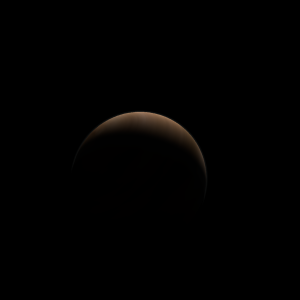|
|
Space Astro
|
Info for exoplanet "Hemogyu"
| Scientific (actual) data |
|---|
| Planet | 2MASS J0506+5236 |
| Planet status | Confirmed |
| Planet mass | 26 |
| Radius | 1.05 |
| Discovered | 2022 |
| Updated | 2022-01-23 |
| Temperature (kelvin) | 1065 |
| Log g | 4.74 |
| Publication | Published in a refereed paper |
| Detection type | Imaging |
| Mass detection type | Spectrum |
| Radius detection type | Flux |
| Alternate names | 2MASS J05065012+5236338 |
| Right ascension | 76.71° |
| Declination | 52.61° |
| Star distance | 17.6 |
| Wikipedia article | 2MASS J0506+5236 |
Back
| |
| Fictional info (?) |
|---|
| Suggested name | Hemogyu |
| Planet type | Huge cold gas giant |
| It is the second-brightest natural object in the night sky after Ryose-adanu, reaching an apparent magnitude of -5 - bright enough to cast shadows at night and, often, visible to the naked eye in broad daylight.
For this reason, scientists often classify Hemogyu and Ryose-adanu as "huge cold gas giants" to distinguish them from the other planets. This planet is named after the deity Hemogyu, the demon of destruction.
As seen relative to the fixed stars, it rotates on its axis exactly two times for every four revolutions it makes around @STARNAME. As seen from @STARNAME, in a frame of reference that rotates with the orbital motion, it appears to rotate only once every two years.
Its orbital eccentricity is the largest of all known planets in its solar system; at perihelion, Hemogyu's distance from @STARNAME is only about two-thirds (or 63 pct) of its distance at aphelion.
Two spacecraft have visited Hemogyu: Wayfinder 7 flew by 41 years ago; and Messenger, launched 24 years ago, orbited Hemogyu over 175 times in four years before exhausting its reactor and crashing into the planet's atmosphere 7 years later.
Hemogyu is by far the hottest planet in its solar system, with a mean surface temperature of 740°K (467°C).
The smooth Borealis basin in the northern hemisphere covers 23 percent of the planet and may be a giant impact feature.
The two polar ice caps appear to be made largely of sand.
Observations from Earth have shown seasonal change and increased weather activity as Hemogyu approached its equinox 7 years ago. |
| Atmosphere | Carbonyl sulfide | 98% |
| Nitric oxide | 1.7% |
| Krypton | 0.018% |
| Atmospheric pressure | 0.001 bar |
 |
| Moon | Tapaba Jisere'ku | Small slightly egg-shaped rocky moon |
| Ahyosho Tsu | Very small slightly egg-shaped rocky asteroid |
| Bibyawa-pyomee-n | Large round ice comet |
| Busho | Medium-sized round rocky planetoid |
| Hegikyo | Small almost round crater-filled asteroid |
| Memyakyo-mebo | Large potato shaped oceanic comet |
| Tepa-sa | Medium-sized round ice moon |
| Funhyo-daakya Nyu | Huge round rocky planetoid |
| Dakushi Yofuso Su | Huge slightly egg-shaped rocky asteroid |
| Shisa Iwaryo Mya | Medium-sized round oceanic planetoid |
| Chizopi | Large round gaseous moon |
| Google search for Hemogyu |
|
Website by Joachim Michaelis
|
|
|
|